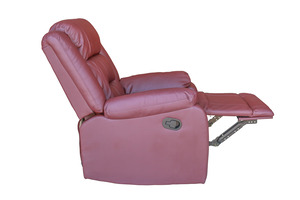
Sleep apnea can leave you feeling extremely tired during the day and may even put your overall health at risk. As such, you’ll naturally want to take whatever steps you can to get your sleep disorder under control. One approach you might consider is sleeping in a recliner; it might sound like an odd idea, but research indicates that it could be more beneficial than you might realize.
What is Sleep Apnea?
Before discussing how sleeping in a recliner can help with sleep apnea, it’s important to review what having the disorder means. People with sleep apnea experience repeated pauses in their breathing while asleep, with each pause lasting ten seconds or more. The issue can often be linked to the muscles in the back of the throat collapsing and blocking the airway. Not only does sleep apnea prevent you from getting quality slumber, but it can also be life-threatening when ignored for too long.
How Can Sleeping in a Recliner Help with Sleep Apnea?
Studies suggest that keeping your head elevated can potentially reduce sleep apnea symptoms. In fact, elevation as little as 7.5 degrees has been shown to have a positive impact. A number of older studies indicate that sleeping with your head at 30-degree or 60-degree elevation (which is where it’s more likely to be when you’re in a reclining chair) can yield similar benefits.
Why does sleeping in a recliner help with sleep apnea? The answer has to do with gravity. When you sleep on your back, your tongue and other soft tissues are more likely to collapse in a way that causes them to obstruct the flow of air. But if your head is elevated, this is less likely to happen.
How Should You Sleep in a Recliner?
Chances are that you’re not used to sleeping in a recliner. Here are some basic tips that can help you stay as comfortable as possible:
- Use a small pillow to give your spine the support it needs.
- Keep your feet in an elevated position with a footrest.
- Sleep under an appropriate number of blankets in order to maintain the proper temperature for a good night’s sleep.
Are There Alternatives to Sleeping in a Recliner?
If you’re unable to get the rest you need in a recliner, you should consider taking some alternative steps for controlling your sleep apnea. Many experts recommend sleeping on your side or using more than one pillow to keep your head raised.
Naturally, you should also speak to a professional about treatment options for your sleep disorder. Get in touch with your sleep dentist today to see what they recommend for your sleep apnea.
About the Author
Dr. Angie Nauman has close to 30 years of experience in the dental field and is double-board-certified by the American Board of Dental Sleep Medicine and the American Sleep & Breathing Academy. She can offer different kinds of oral appliances for dealing with sleep apnea. To schedule a consultation with Dr. Nauman at Healthy Sleep Tulsa, visit her website or call (918) 300-4325.
